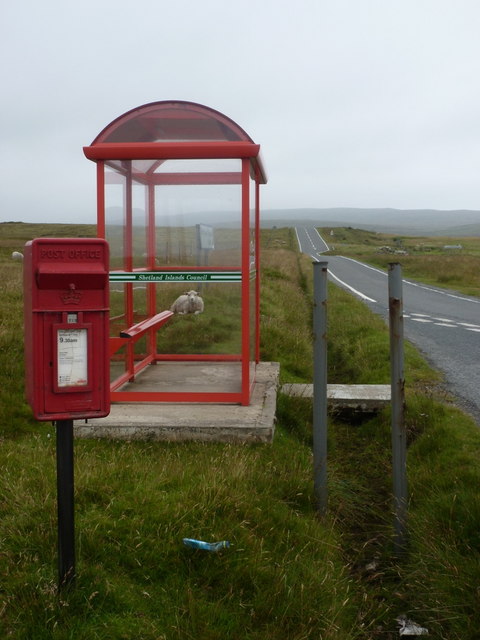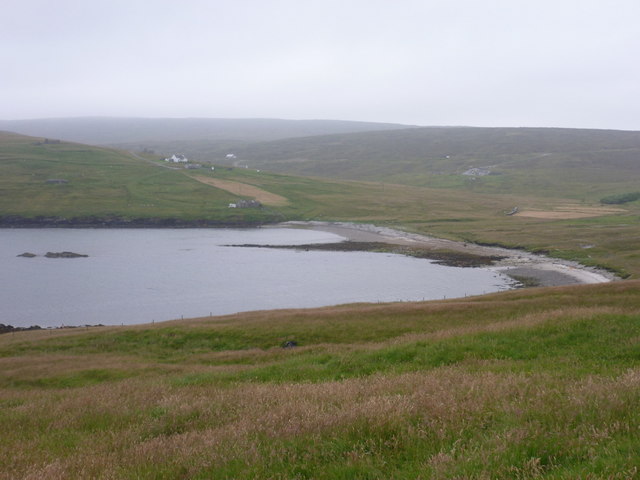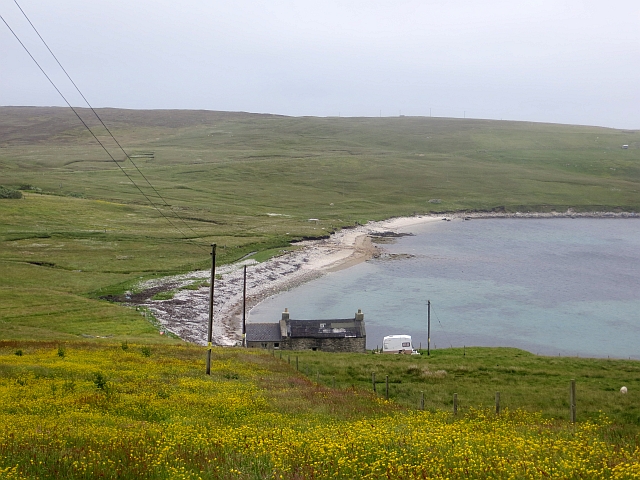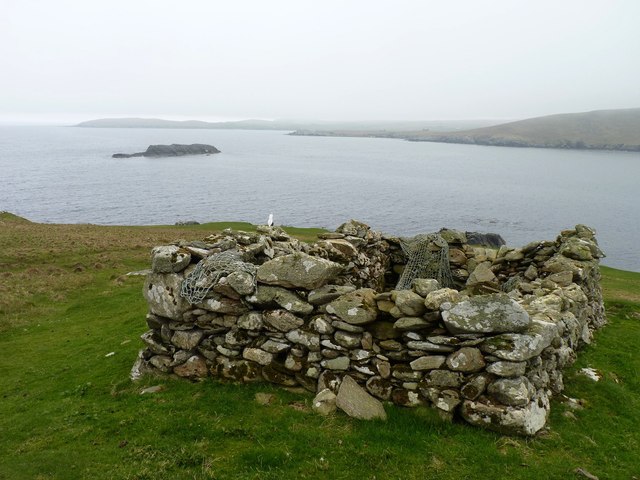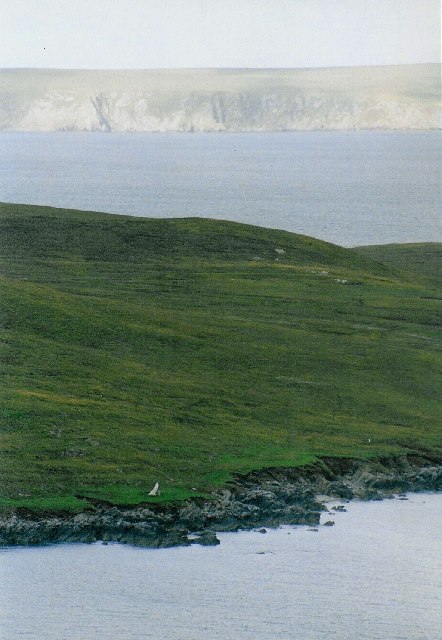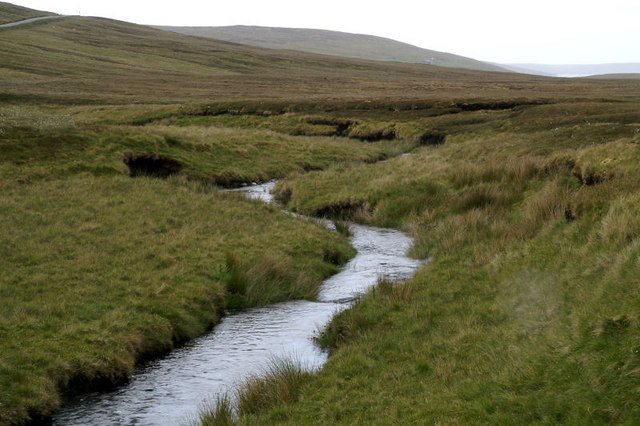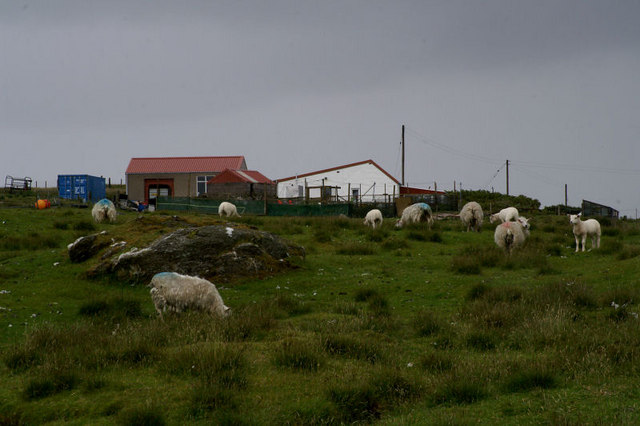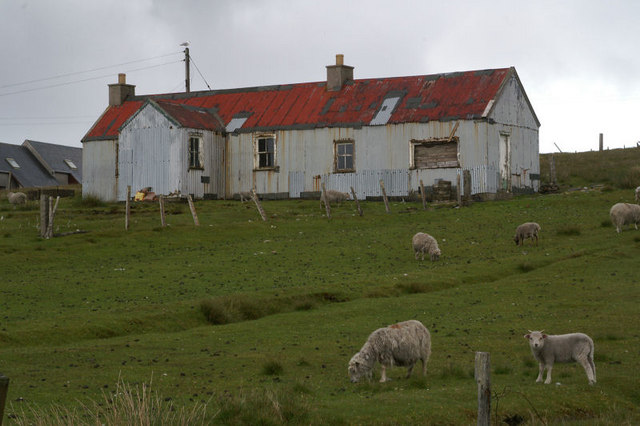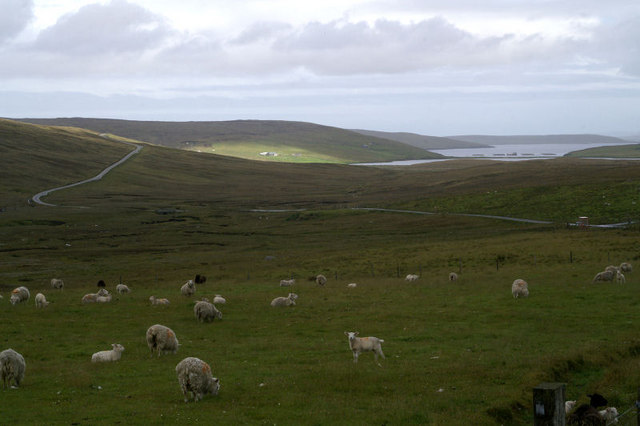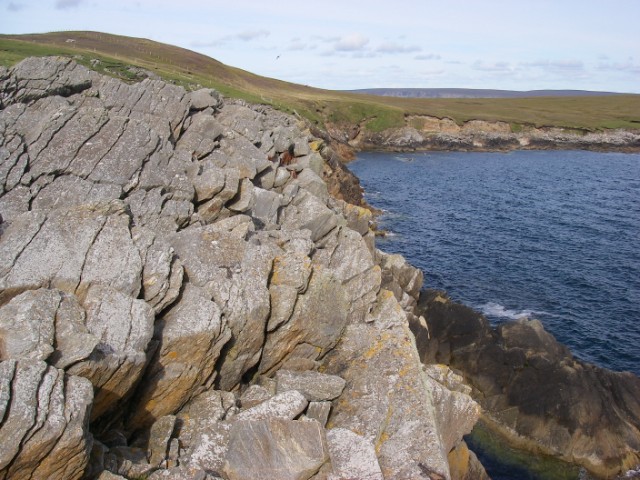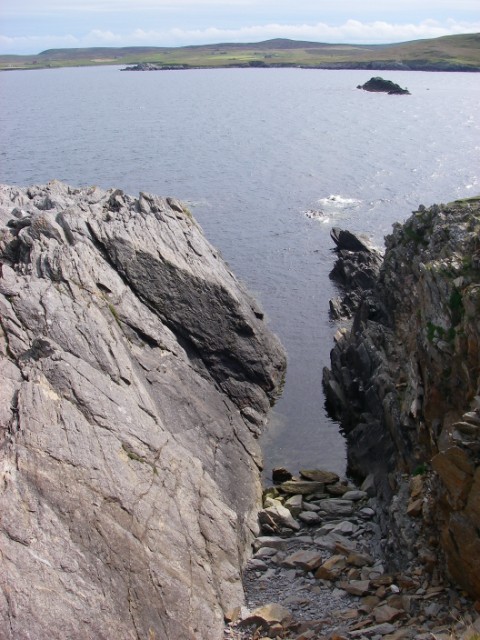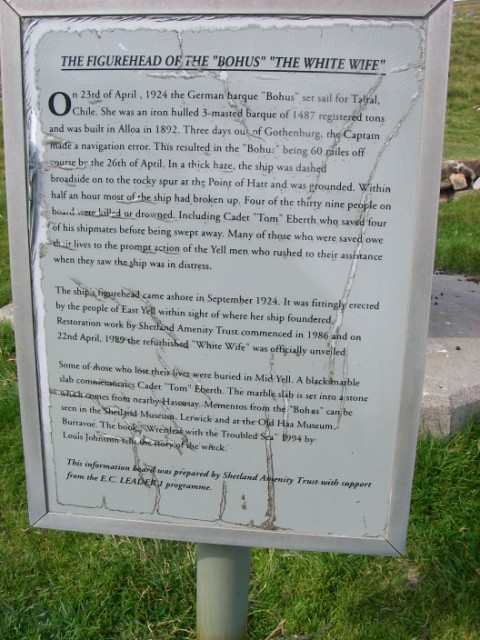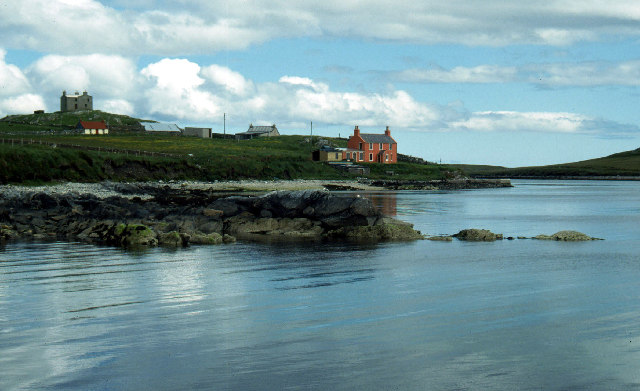Quab
Sea, Estuary, Creek in Shetland
Scotland
Quab
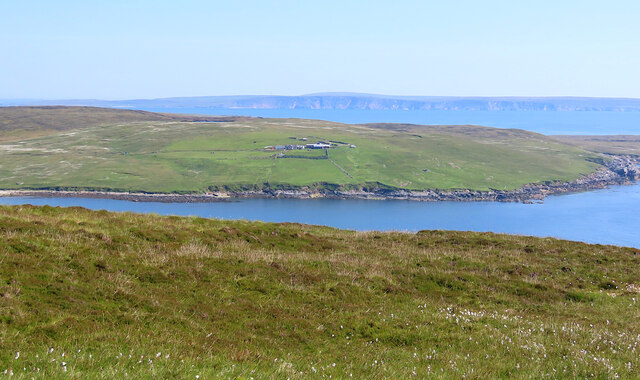
Quab is a small but picturesque sea inlet located in Shetland, Scotland. Nestled in between rolling hills and cliffs, this estuary-creek hybrid offers a unique blend of natural beauty and tranquility. The name "Quab" originates from the Old Norse word "kvafr," meaning "deep pool," which accurately describes the deep, calm waters found here.
The entrance to Quab is narrow, with steep cliffs on either side, providing protection against the tumultuous North Sea. As you venture further into the inlet, the rugged coastline gives way to a more serene landscape of sandy beaches and rocky outcrops. The crystal-clear waters of Quab are teeming with marine life, making it a popular spot for fishing and birdwatching.
The surrounding area boasts an abundance of wildlife, including seals, otters, and a variety of seabirds. Visitors to Quab can often catch glimpses of these fascinating creatures as they go about their daily routines.
The tranquil atmosphere of Quab makes it an idyllic spot for leisurely walks or picnics. The surrounding countryside offers breathtaking views of the inlet, with its ever-changing tides and shimmering waters. Additionally, the nearby hills provide ample opportunities for hiking, offering panoramic vistas of the surrounding landscape.
Overall, Quab is a hidden gem in Shetland, providing visitors with a chance to immerse themselves in the natural beauty and serenity of the Scottish coast. Whether you're seeking a peaceful retreat or an adventure in nature, Quab is sure to captivate and leave a lasting impression.
If you have any feedback on the listing, please let us know in the comments section below.
Quab Images
Images are sourced within 2km of 60.553717/-1.0121912 or Grid Reference HU5485. Thanks to Geograph Open Source API. All images are credited.
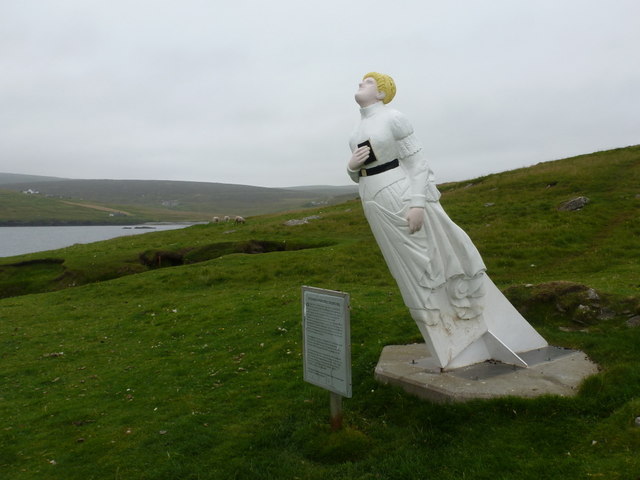
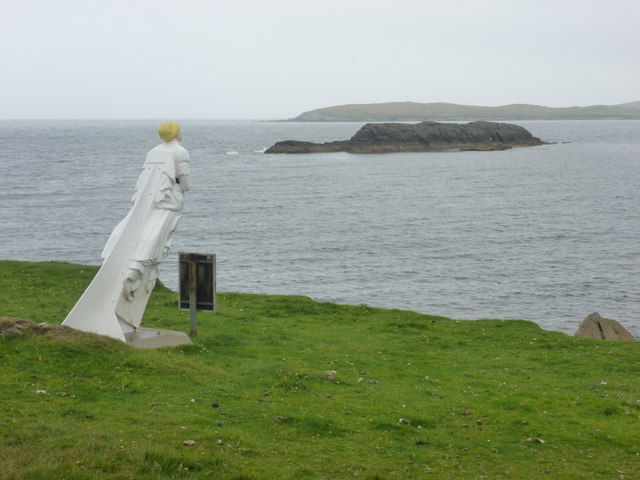
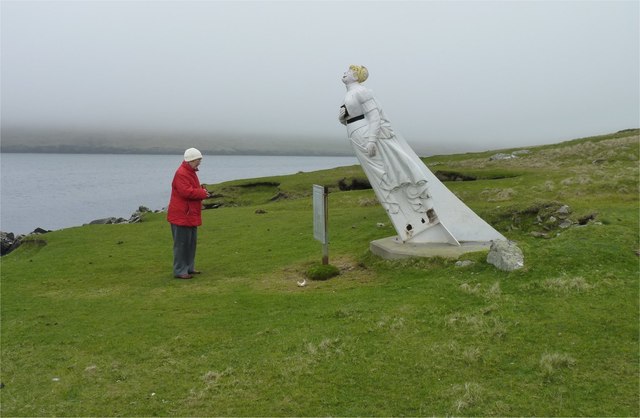
![Figurehead of the "White Wife" According to local tradition (and thus published many times) The White Wife (or White Lady) of Otterswick is said to be a German lady.
According to her life records we have to say that Bertha is a British girl or more correctly a Scottish girl, &quot;born in Grangemouth of German parents&quot;.
She was the figurehead of the steel barque Bertha built in 1892 by Grangemouth Dockyard Co., Grangemouth, as yard no. 163. Her dimensions were: 74,11×11,70×6,88 metres [248&#039;2&quot;×38&#039;4&quot;×22&#039;4&quot;] and with a tonnage of 1653 GRT (1499 NRT and 2600 DWT). She was launched at the shipyard of Grangemouth Dockyard Co. for Joh. H. Soost, Hamburg on July 6th, 1892 and assigned the official German signal RJQD.
She was named after Bertha, the eldest daughter of Joh. H. Soost, and this should be the proper name of The White Lady.
In 1899 she was sold to Captain M. Dietrich, Hamburg, and thereafter changed hands several times. In her great days until 1912 she did a lot of long distance runs such as 1904 from Lizard Point to Seattle in 154 days, 1906 from Lizard Point to Sydney in 117 days and again in 1909 in 114 days or in 1910 from Sydney to Falmouth f/o in 129 days.
In 1912 she was sold to Sweden changed hands several times and ended up with Förnyade Ångfartygs AB Viking, Gothenburg, for SEK 500.000. She was then renamed Bohus and assigned the official Swedish Reg. No. 5903 and signal KBCV. Captain at that time was Mr Ragnar Erik Nyberg, Stockholm. Bertha was bound to the Baltic Sea, mostly sailing in Swedish and Finnish waters.](https://s0.geograph.org.uk/photos/60/69/606956_9287ed4c.jpg)
Quab is located at Grid Ref: HU5485 (Lat: 60.553717, Lng: -1.0121912)
Unitary Authority: Shetland Islands
Police Authority: Highlands and Islands
What 3 Words
///squad.relishes.disbelief. Near Houbie, Shetland Islands
Nearby Locations
Related Wikis
Aywick
Aywick is a small settlement on the east side of Yell, an island forming part of the Shetland Islands north of Scotland.The naturalist Bobby Tulloch was...
Otterswick
Otterswick is a hamlet on the island of Yell in the Shetland Islands, on the inlet of Otters Wick. It is on the east side of the island. There is also...
Gossabrough
Gossabrough is a coastal hamlet, wick and ness on the southeast side of the island of Yell, Shetland, Scotland. The Wick of Gossabrough lies between the...
Mid Yell
Mid Yell is a coastal settlement on the island of Yell, the second largest of Shetland Islands, Scotland. Mid Yell, the largest settlement on the island...
Burra Voe
Burra Voe (Old Norse: Borgavagr, Broch Bay) is sheltered bay (voe) at the southeast corner of the island of Yell. The village of Burravoe (HU525795) is...
Burravoe
Burravoe is a community on the north shore of Burra Voe, in the south-east part of the island of Yell in the Shetland Islands, Scotland. The name Burravoe...
Old Haa Museum
The Old Haa of Brough in located in Burravoe, Yell, Shetland, Scotland. Built for Robert Tyrie, a merchant, in 1672, houses the local museum for Burravoe...
Hascosay
Hascosay (Scots: Hascosay; Old Norse "Hafskotsey") is a small island lying between Yell and Fetlar in the Shetland Islands, Scotland. == Geography and... ==
Have you been to Quab?
Leave your review of Quab below (or comments, questions and feedback).
